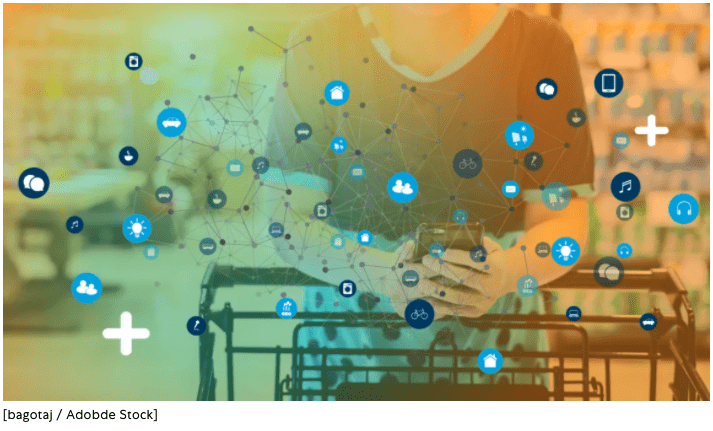Intent data acts as a kind of bat signal, cutting through the darkness.
I’ve written recently about the changes surrounding third-party cookies and data collection on the web, and at the end of my last piece I noted the likely rise of anonymized consumer intent signals for B2C marketing in this rapidly changing landscape. I want to dig in a little deeper on that topic today.
A B2C CONCEPT BORN FROM B2B PURCHASING
Over the years, the sales funnel has changed, shifting from direct connections with consumers at the top of the funnel—which enabled business to connect early and often in a purchase journey—to what companies such as 6sense refer to as a “dark funnel,” which leaves sales and marketing teams unaware of interest until a purchaser is on the brink of buying. In response to this shift, B2B businesses have turned to intent signals to help shine a light on who their prospects are earlier in the buying journey.
Intent data acts as a kind of bat signal, cutting through the darkness. By looking across an array of data points from a number of related spaces, intent data can tell vendors if a person is displaying a level of interest (i.e., active research) that would indicate a likely intent to purchase. It can be remarkably accurate, as the aggregated information paints a much fuller picture than third-party cookie tracking is able to.
For example, when taken together, a spike in content searches for durable carpet, “best office layouts,” and lumbar-supporting desk chairs could be an indication a business is moving offices and in the market for new office furniture. Armed with this insight, marketers and salespeople can engage with a prospect proactively, instead of passively waiting for them. In essence, it triangulates the data from a persona group to foretell their next actions.
Intent signals have become an important part of the B2B sales cycle, giving companies a significant leg up in connecting with the right audiences at the right time. With longer purchase cycles and highly specific markers of consumer interest, B2B sales and marketing teams have had the advantage when it comes to using intent signals. But the B2C market could finally be ready to take advantage of this powerful tool.
THE RISE OF CONSUMER INTENT DATA
B2B sales operate with a long-range view, which tends to rely on large data sets and a significant capital investment. That makes B2B a better match for the intent signal approach than B2C’s shorter-range timeframes. Plus, with strong third-party cookie options for B2C marketers, there was no impetus to shift.
But with increasing regulations regarding data and privacy, and increasing consumer scrutiny (witness the shift away from third-party cookies), an aggregated approach to using anonymized consumer intent data to determine purchasing patterns and customer wants seems like a natural evolution.



